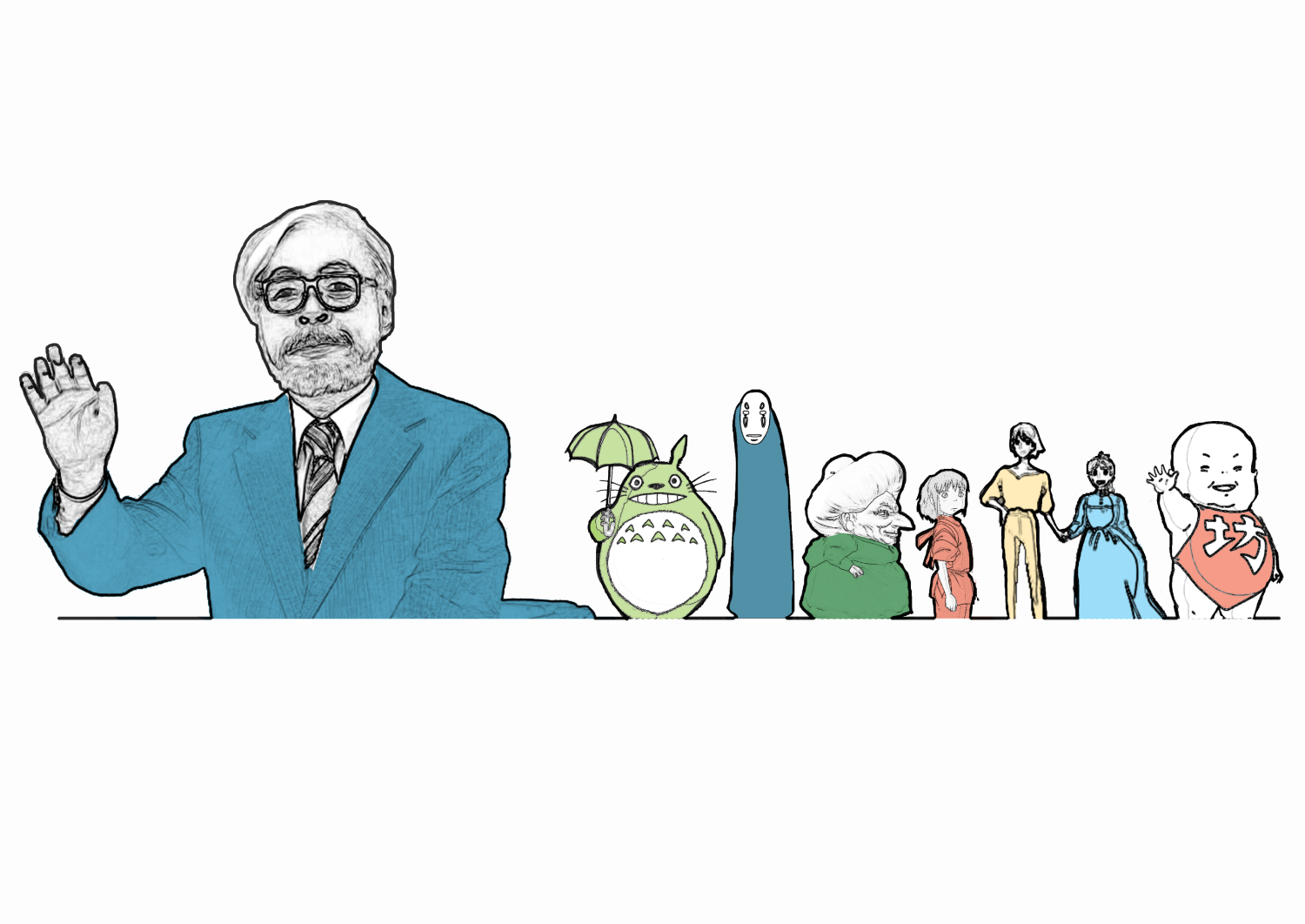
Even if one had never heard of Japanese animator, director, manga artist, producer and screenwriter Hayao Miyazaki before, it would be hard not to recognize his work. Students all over campus don Miyazaki merchandise, be it No Face — one of the central character in his film “Spirited Away”— or Totoro-themed crewnecks.
Junior Annie Wang was shocked when she first heard that Miyazaki had announced that he would be retiring after his next and final film, “The Wind Rises,” to be released to the United States in February 2014.
“Why?” Wang asked.
It’s time for Miyazaki, now 72, to step down because of old age, stress and a lack of the youthful energy he used to have. Miyazaki founded Studio Ghibli, which produced all of his popular films such as “My Neighbor Totoro,” “Spirited Away,” “Howl’s Moving Castle” and his forthcoming feature “The Wind Rises.” Despite mentioning retirement several times in the past, Miyazaki is “quite serious” this time around. Regardless, he has left an imprint on all of his admirers, and his fanbase at MVHS is no exception.
Senior Blake Nishimoto was also shocked to hear that Miyazaki was retiring. Though he has seen many of his films during his childhood, he feels Miyazaki’s retirement is well deserved.
“I grew up watching films like ‘Spirited Away’ and ‘Kiki’s Delivery Service’, I’ve always like his films, but I can see why he is retiring now; he’s getting old,” said Nishimoto.
Nishimoto also spoke fondly of Studio Ghibli’s partnership with Disney in the 2008 film “Ponyo.”
“I think that ‘Ponyo’ was a great idea for Miyazaki,” Nishimoto said. “I mean, everyone in Japan loves his films, so it made a lot of sense to bring his style and storytelling to a more American audience.”
Before “Ponyo,” however, Miyazaki had long since been bringing his work to the around the world, even the United States. Before Miyazaki became prominent, American audiences were already watching anime such as “Kimba the White Lion” and reading manga such as “Akira” in the 1980s. A combination of a growing Asian population in America and the revival of animation in film paved the road to success for Miyazaki.
“He rode the wave and hit a chord,” said art teacher and yearbook adviser Jay Shelton, who shows Studio Ghibli’s “Grave of the Fireflies” to his students yearly.
“Part of it was just being in the right place at the right time. Lots of white American kids watch anime and read manga because of him. It might have happened anyway,” said Shelton, “But I don’t see that going back the other way.”
Miyazaki’s popularity made him one of the few filmmakers who was able to sell his movies based on his name, a symbol of his success. His name became a brand.
“Just like how some people say, ‘Oh, it’s a Disney movie, I have to watch it,’ we say, ‘Oh, it’s a Miyazaki movie, I have to watch it,” junior Phoebe Lim said.
His work is characterized by a whimsical style, predominantly hand drawn, though there are computer-generated elements in his animations.
“I feel like his colors are really well blended and earthy,” junior Julia Yu said. “There’s a very distinct way he draws. It’s very free and open.”
Nishimoto’s favorite aspect of Miyazaki’s films is the worlds that each story takes place in.
“The worlds themselves are in some ways the most important to the story, the way he combines everyday characters with these elaborate creatures and fantastic situations, the myths that Miyazaki creates are better than the films themselves,” Nishimoto said.
Many students watched Miyazaki’s films as children, and his work was just as integral to their childhoods as Walt Disney’s was for others. While Miyazaki films are usually associated with a younger, more innocent age for many students, it’s not uncommon for students to revisit his films and find new meaning in his work.
“I like how he portrays Sophie [from “Howl’s Moving Castle”],” Wang said, “Even though she was turned into an old lady she broke the spell by finding her inner beauty. I think that’s really nice because we all need that in society right now.”
Miyazaki is also credited with making films that invoke an intense emotional response from viewers.
“Every single one of his movies can make you go through the whole human range of emotions,” Wang said, “There will be parts when you’re laughing to death, and there will be parts when you’re bawling your eyes out and parts where you’re saying, ‘Whoa, that’s really deep.’ ”
Another defining quality of Miyazaki’s work is the music he integrates into his films. In several of his films, Miyazaki has had composer Joe Hisaishi write the score for many of his films, namely “Spirited Away” and “Howl’s Moving Castle,” which have been well received by fans all around.
“I think his music helps bring the movie to life,” Lim said, “The movie wouldn’t be able to accomplish that without the music.”
Miyazaki’s work will be sorely missed by students and teachers all around. He finishes strong with “The Wind Rises.” When he steps down, he will leave behind a legacy that has impacted generations. His playful, magical style will forever enchant our hearts.




